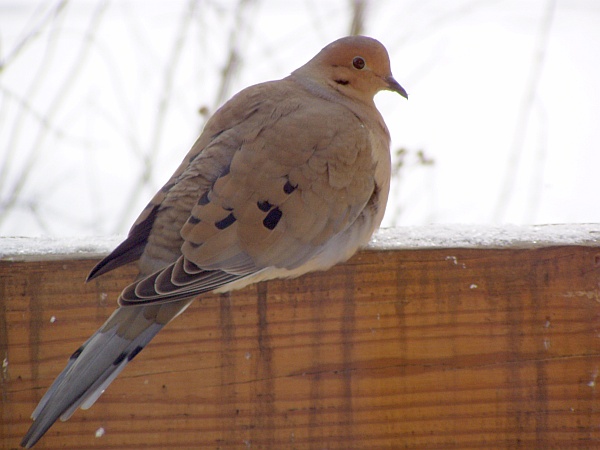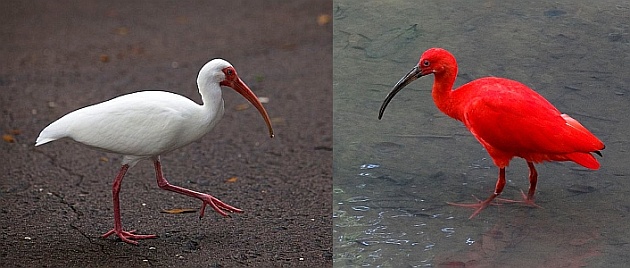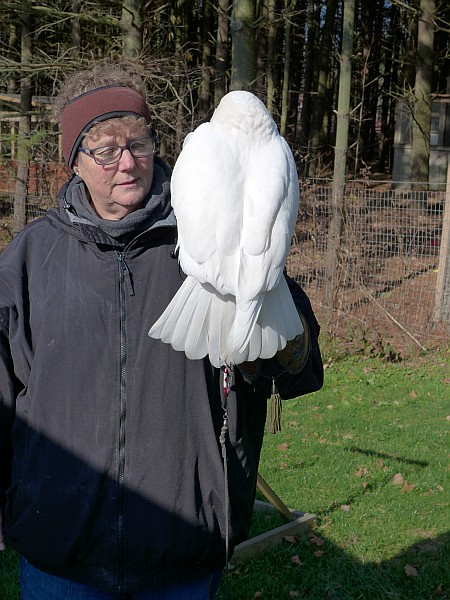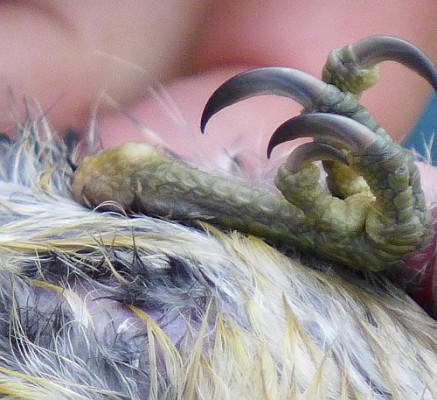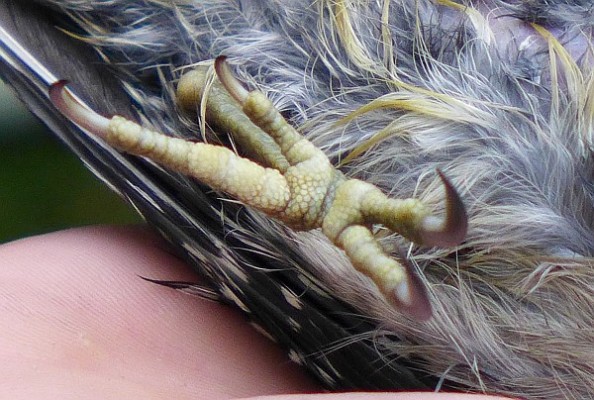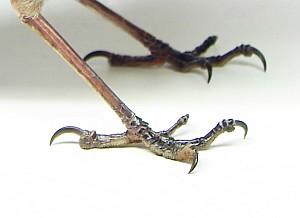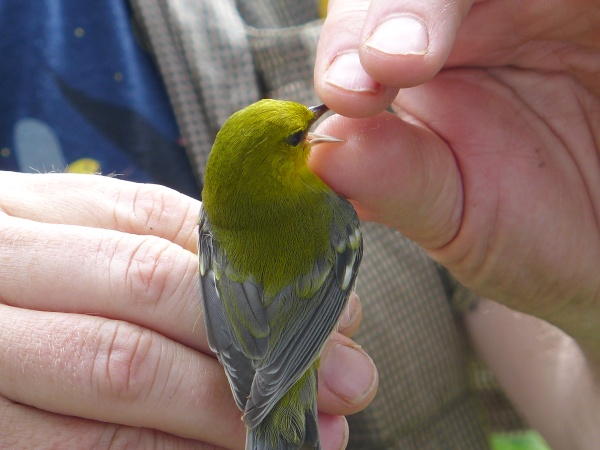
With songbird migration underway, here’s something to think about when you see a blue-winged, golden-winged, Tennessee, orange-crowned, or Nashville warbler: Their beaks make a strong opening.
Back in July at Cunkelman’s Neighborhood Nest Watch banding, Bob Mulvihill’s mist nests captured an immature blue-winged warbler (Vermivora cyanoptera). With the bird in hand he put his fingers lightly on the bird’s beak and it immediately opened its beak and pushed Bob’s fingers away. What an unusual talent! These warblers have extremely strong gaping muscles.
Golden-winged warblers, closely related to blue-wings, are so well studied that this fact is mentioned in the literature about them. Bob has also found it to be true of the (formerly*) Vermivora warblers and oriole species he’s banded in eastern North America.
Why this unusual talent? Vermivora literally means “worm eater” — vermi:worm, vora:eat. The “worms” are small caterpillars (not earthworms) that hide among leaves, often wrapped in cocoons or in curled up leaves. The warblers open the rolled leaves against the caterpillars’ will.
When you see these talented birds watch them probing among the leaves. They’re making a strong opening.
(photo by Kate St. John)
———————————————–
And what’s all this about formerly(*)?
The genus Vermivora used to contain nine species including Tennessee, orange-crowned, Nashville, Virginia’s, Colima and Lucy’s warblers, but in 2010 the American Ornithological Union transferred all but Bachman’s (extinct), blue-winged and golden-winged to the genus Oreothlypis. After years of having nine Vermivoras, it’s hard to keep up with the changes.





